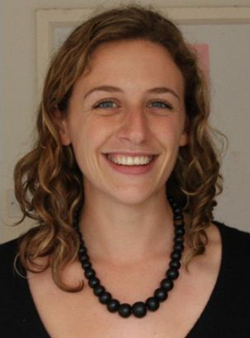MB ChB (Hons), MRes (Distinction), MRCPCH, DTM & H
Research Interests
I am a paediatric trainee with a passion in international child health and infectious disease. My work in paediatric departments in Malawi, Ethiopia, Cuba and Nepal has afforded me first-hand experience of the impact of infectious diseases on children around the world.
PhD Research Question:
How does the Swain Langley 2 polymorphism in complement receptor 1 protect against cerebral malaria?
My PhD in the Rowe Laboratory is exploring genetic resistance to cerebral malaria (CM), the most severe complication of Plasmodium falciparum infection. The pathogenesis of CM is unclear and specific therapies remain elusive. Recent work has found that the Swain-Langley 2 (Sl2) mutation, a single nucleotide polymorphism in the complement receptor 1 (CR1) gene, is associated with protection against CM, but not other severe malarial subphenotypes. This provides a route of immunological and molecular enquiry into CM pathogenesis.
This association has been identified in two Kenyan populations, but has not been replicated in Gambian populations. It is therefore possible that this mutation is in linkage disequilibrium (LD) with a protective variant in Kenyan but not Gambian individuals. I am using genomic sequencing data to identify potential variants in LD with Sl2 in Kenyan but not Gambian individuals. I will then use DNA from a previous CM case-control study conducted in Kenya to validate new putative variants.
I am also investigating the functional effects of the mutation in Kenyan children through fieldwork visits and collaboration with the Kenya Medical Research Institute (KEMRI) – Wellcome Trust Research Programme.
CR1 is widespread both on erythrocytes and lymphocytes. I will investigate whether the mutation affects distribution of parasite virulence factors on the parasitised erythrocyte membrane, erythrocyte immune adherence properties or phagocytosis of the infected erythrocyte. These experiments will be undertaken using primary cells from Kenyan children with and without the genotype of interest.
In addition, following promising pilot work, I will investigate the possibility of CR1 as a cytoadherence receptor on human brain endothelial cells in response to different stimuli.
Curriculum Vitae
2012
- Edinburgh Clinical Academic Training (ECAT) Fellow – Wellcome Trust funded PhD Clinical Fellowship
2012
- Masters of Research (Public Health) with Distinction – University of Manchester
2011
- Member of the Royal College of Paediatrics and Child Health (MRCPCH)
2007
- Diploma in Tropical Medicine and Hygiene (DTM & H) – London School of Hygiene & Tropical Medicine
2006
- MB ChB (Bachelor of Medicine, Bachelor of Surgery) with Honours – University of Edinburgh

